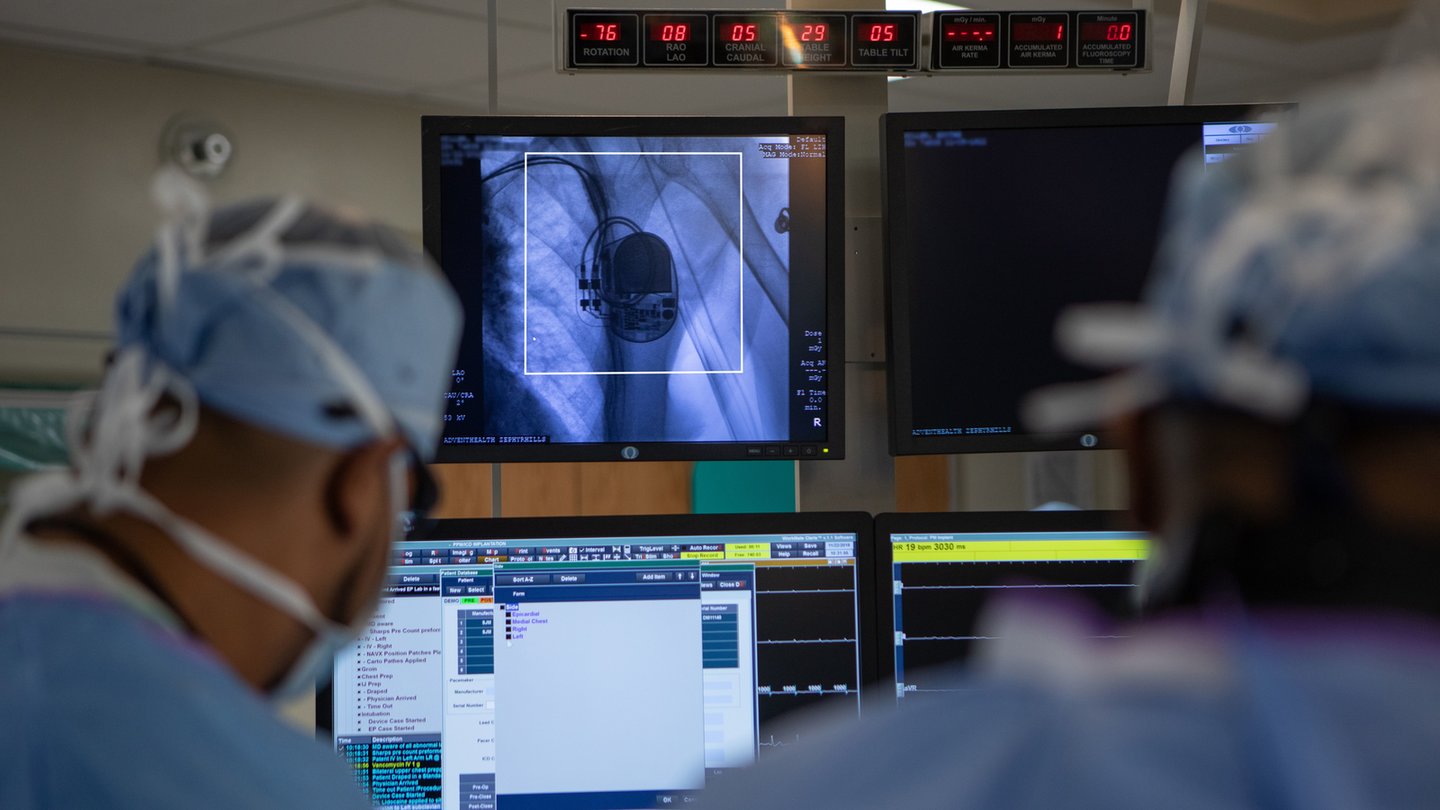Omega Medical IMAGING
Using AI to Reduce Radiation Exposure
By Stephanie Kreml
Omega’s new FluoroShield technology uses AI-powered image processing to minimize radiation use outside the region of interest, decreasing the risk of exposure to patients and physicians.
Brian Fleming’s commitment to find new solutions which decrease radiation exposure from fluoroscopy started in his youth. “When I was a little boy, I had to undergo several interventional image-guided procedures in the hospital,” he recalls. “I can still remember lying scared on the table and the staff comforting me before I was put under. I am thankful for the staff that cared for me and who were exposed to scatter radiation during my procedures.”
After starting his career in the defense industry, Fleming shifted to healthcare when he started working for General Electric. Omega Medical Imaging was one of Fleming’s customers while at GE, and when Omega was put up for sale, he jumped at the opportunity to become a part owner and CEO. Fleming says, “My partners and I purchased Omega 10 years ago and have been positioning us as a disruptive image guidance technology company focused in the interventional medical space.” This builds on Omega’s foundation as a key manufacturer of cardiac x-ray imaging systems for the last 30 years.
Obtaining FDA clearance last Spring, Fleming’s desire to improve the safety of image-guided procedures for both patients and staff is becoming a reality.
FluoroShield uses artificial intelligence (AI) algorithms to automatically identify the interventional cardiologist’s region of interest (ROI) so it can decrease the radiation dose to the patient during image-guided procedures. This approach also decreases the scatter radiation exposure to physicians and other staff. “Conventional systems used in most labs today blast the anatomy in the full field of view because they are not using AI ROI,” states Fleming.
“Our TruBlockTM ultrafast secondary collimator system dynamically blocks radiation outside the ROI automatically,” explains Fleming. This method “protects the peripheral anatomy, which is only needed for reference and orientation. The system does this in both Fluoro and Cine modes.”
In studies using FluroShield, Omega demonstrates a true decrease in radiation exposure. “This solution has been shown to reduce exposure up to 84% compared to conventional image-guided x-ray systems,” Fleming reports. “Peer reviewed clinical studies show the median reduction was 61%+ to patients and 60% [for] staff when compared to conventional systems.”
In order to achieve this reduction in radiation dose, the FluoroShield system acquires high resolution images with various pulse rates to determine the optimal location of the ROI. During AI-driven image processing, these ROI images are overlaid on high resolution images of the entire field of view (FOV). The FOV images are captured at a decreased frame rate relative to the ROI, minimizing radiation exposure to peripheral anatomy around the region of interest. “These dynamic high res images must be crisp and perfect everything time to provide optimal visualization and guidance,” Fleming states.
FluoroShield’s seamless integration does not interfere with existing workflows. “The staff doesn’t need to do anything but focus on the case, all this is hands free,” Fleming says. “This next level of safety requires no staff training or protocol changes.” But if interventionalists need to make changes to the region of interest, they can. “There is a manual mode for the rare times the doctor wants to adjust the ROI manually.”
Interventional cardiologists using FluoroShield can be assured of the system's ability to accurately determine their region of interest. Fleming explains, “Omega’s FluoroShield AI was taught the optimal ROI location using hundreds of cases focusing on key markers at the site of the intervention.” The system recognizes movement from catheters, contrast, stents, and balloons to help identify the region of interest.
Blocking Unnecessary Beams
Fleming’s experience at GE gives him confidence Omega will continue to be at the forefront for advancing solutions like FluoroShield. Conglomerates like GE, Philips, and Siemens “are slow and resistant to adopt new ways and technologies,” Fleming says. “We have been successful in growing because we listen to the customer and quickly deliver cost-effective solutions tailored to their specific requirements. We are not burdened with bureaucracies bent on protecting status quo cash cows.”
As a result, Omega is ahead of the rest when it comes to improving safety during fluoroscopic procedures. “None of the conglomerates are offering this technology or this high level of protection to patients and staff,” Fleming says. “Until they do, they will try to muddy the waters with their definition of low dose. All that is noise. The data and benefits are clear. Our customers are smart.”
Advanced and Agile

Fleming is optimistic demand for FluoroShield will take off now that it has been cleared for the US market. “This technology is quickly becoming the standard of care in interventional x-ray imaging,” he says. “Just like pulsed fluoro when it was first introduced, image guidance systems without AI are quickly becoming obsolete.”
And Omega is continuing to improve the field of interventional cardiology, but Fleming is not sharing many details. “We have a full innovation pipeline. Stay tuned.”
With the success of FluoroShield, Fleming continues his commitment to improving safety for patients and staff. “I am reminded of that daily when I see the scars that mark my torso from the skin cancer surgeries in the areas where I was likely exposed to x-rays as a kid. I wake up every day committed to providing doctors and staff solutions that best protect them and their patients and make their jobs better every day.”
Making Safety the Standard

Conventional systems used in most labs today blast the anatomy in the full field of view because they are not using AI ROI with TruBlockTM technology
Brian Fleming, CEO, Omega Medical Imaging
